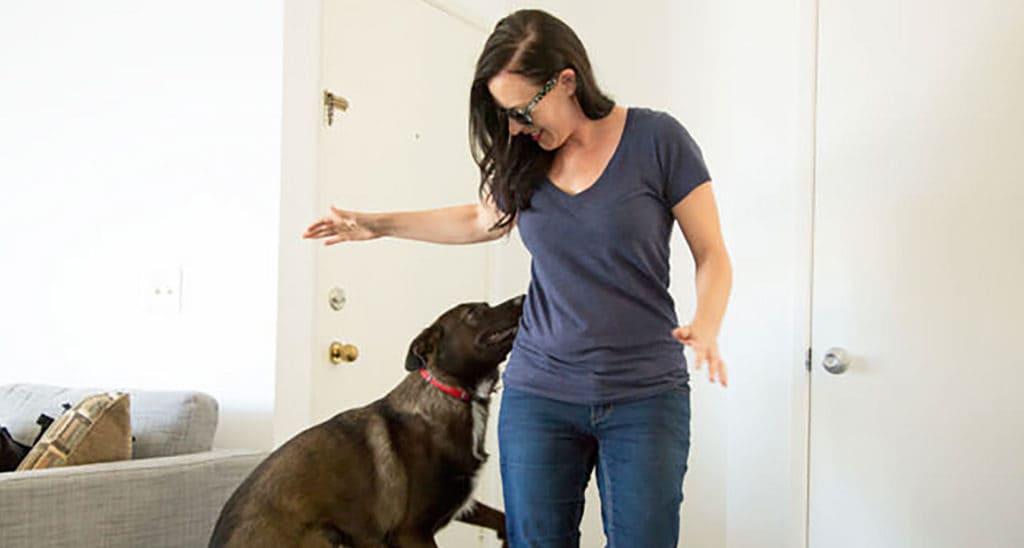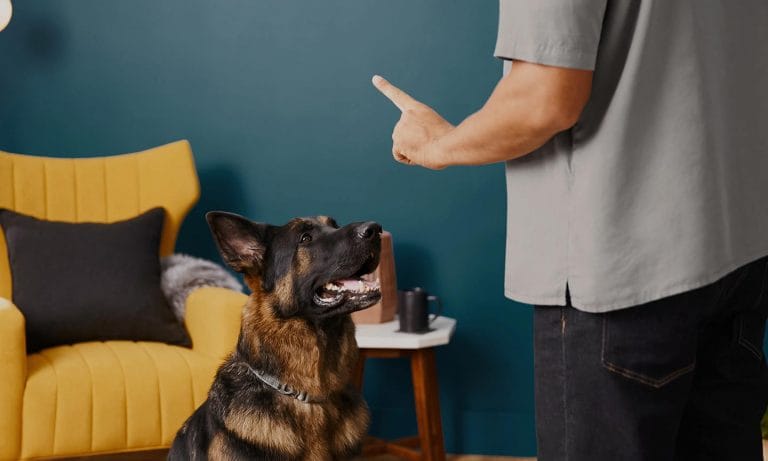In my business, I primarily do private dog training in people’s homes. Up to several times a day, when I ring the bell or knock on the door, utter chaos ensues with dogs going crazy. Why does this happen? Dogs are great at making quick associations; so, every time the bell rings or they hear a knock, it means someone is coming to visit them. This can be pretty exciting stuff!
I had one client complain that my explanation did not make sense, as they just moved into the area.
“We do not have any friends here yet. The only person who rings the door is the pizza delivery guy.”
I then asked, “Do you give your dog pizza?”
Of course the answer was yes. So how much more exciting could it get? Each time the doorbell rang, pizza was being delivered.
Control The Madness
So how can we prevent our dogs from going crazy when someone comes to the door? First we have to change what the dog associates with the doorbell or a knock. Remember the story about Pavlov and his dogs? Each time he fed the dogs he first rang a bell. Soon the dogs drooled when they heard a bell. Why? Because the dogs quickly made the association that the bell signaled food. This type of training is sometimes referred to as Pavlovian or classical conditioning. To get started training your dog, you need:
- Someone to ring the doorbell or knock
- High-value, soft dog treats in tiny portions, such as Blue Buffalo’s Blue Bits training treats or even small pieces of string cheese, hot dogs, rotisserie chicken, etc.
- Dog or dogs
1. Condition Your Dog To Expect A Treat
Ring the bell or knock on the door and immediately feed your dog the treat. It does not matter if he is barking and running around like crazy. These are symptoms of his excitement and can’t be reinforced by giving him the treat. Sometimes you have to start by just throwing the treat on the ground until he realizes he is being treated. Continue to ring the bell or knock every 15 seconds for 5 to 10 repetitions. Stop, put the treats away and repeat later. Your goal is that when the dog hears the bell ring or a knock on the door, he immediately comes to you for a treat instead of going crazy at the door. When this happens, you are ready to plug in a new behavior.
2. Train Your Dog To A Stay Spot
Sit and stay at the door are great behaviors to teach any dog. Not only do these prevent chaos at the door, but they also keep dogs from dashing out of an open door.
- Start by teaching your dog a stay. Have your dog sit. Say “stay” and take one step back. If your dog holds his stay, use a clicker, like Frisco Pet Training Clicker with Wrist Band, or a marker word to mark the behavior, and then return and treat your dog. Slowly increase the number of steps until you build up distance and time away from your dog.
- Use the same spot in the entryway each and every time. Find a spot where your dog can clearly see who is at the door, but far enough away for you to be able to open the door and allow someone to enter without your dog being right on top of them. A hall rug is great for this.
- Start without anyone at the door. Take your dog to the spot where you want them to stay. Give him his stay cue and head toward the door. Be ready for your dog to break position. The door is a big pull, so do not be discouraged if progress is slow. Just take your dog back to the stay spot and start over. In short sessions of two to three minutes, work on stay at the door until you can open up the door and your dog doesn’t move. If your dog is one to take off out of the door, put him on a long line attached to the staircase or a piece of furniture so that he has the freedom to work but not get away from you.
- Without using the bell or knocking, add a person outside of the door. Now repeat the stay process until you can open the door and let the person in. If at any time your dog breaks his stay, close the door with the person outside. Soon your dog will realize that the only way he gets to see the person is if he holds his stay.
3. Keep Your Dog From Reacting To The Doorbell Or A Knock
Once your dog is holding his stay with the door being opened when a person is outside, it is time to add the doorbell or a knock.
- Ring the bell and feed the treat where you want your dog to stay.
- Ask your dog to stay and open the door without anyone outside first. If your dog holds his stay, reward him heavily! I give my own dogs several treats in a row.
- Once he is holding his stay throughout, it is time to add a person outside and repeat the process until your dog can hold his stay while the person enters.
- Now you are ready to use it when someone actually comes to the door.
Troubleshooting Common Problems
The biggest question I get during this process is what to do while you are still training your dog. Some options include:
- Put him on a dog leash and reward him for any and all appropriate behavior when you answer the door.
- Put him in a dog crate when you know someone is coming over or before answering the door.
- Put him outside in a fenced yard or safe, enclosed area.
How can you train this if you have multiple dogs? You can do it one of two ways. Work with each dog individually until he is able to stay at the door and then work them together. Or you can work with the dogs together from the beginning. This takes time and patience. You will not get as much training done in your training sessions with multiple dogs. Keep training sessions short and sweet, and do not get discouraged.
Once, when I rang the bell at a client’s house for the very first time, the dogs were going crazy barking and jumping all over the door and windows. It took my clients all of their strength to corral and hang onto the dogs when I entered. After a couple of weeks, I returned to the home and when I rang the bell, I did not hear a peep. I assumed that the dogs were outside. When they opened the door there were the two dogs sitting quietly in the living room waiting for me to enter. You, too, can achieve the same with training and consistency!
By: Jennifer Mauger, CCPDT
Like this story? Check out more of our favorite reads:
Share:













